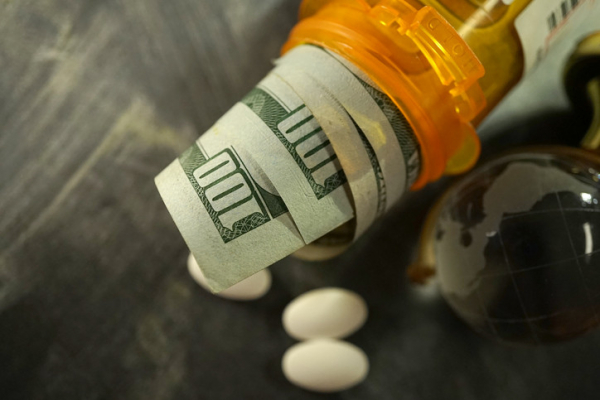
Winter hiking: Magical or miserable?

By midwinter, our urge to hibernate can start to feel constricting instead of cozy. What better antidote to being cooped up indoors than a bracing hike in the crisp air outdoors?
Winter backdrops are stark, serene, and often stunning. With fewer people on the trail, you may spot more creatures out and about. And it’s a prime opportunity to engage with the seasons and our living planet around us, says Dr. Stuart Harris, chief of the Division of Wilderness Medicine at Massachusetts General Hospital. But a multi-mile trek through rough, frosty terrain is far different than warm-weather hiking, requiring consideration of health and safety, he notes. Here’s what to know before you go.
Winter hiking: Safety first
“The challenge of hiking when environmental conditions are a little more demanding requires a very different approach on a winter’s day as opposed to a summer’s day,” Dr. Harris says. “But it gives us a chance to be immersed in the living world around us. It’s our ancient heritage.”
A safety-first attitude is especially important if you’re hiking with others of different ages and abilities — say, with older relatives or small children. It’s crucial to have both the right gear and the right mindset to make it enjoyable and safe for all involved.
Planning and preparation for winter hikes
Prepare well beforehand, especially if you’re mixing participants with vastly different fitness levels. Plan your route carefully, rather than just winging it.
People at the extremes of age — the very old or very young — are most vulnerable to frigid temperatures, and cold-weather hiking can be more taxing on the body. “Winter conditions can be more demanding on the heart than a perfectly-temperatured day,” Harris says. “Be mindful of the physical capabilities of everyone in your group, letting this define where you go. It’s supposed to be fun, not a punishing activity.”
Before setting out:
- Know how far, high, and remote you’re going to go, Dr. Harris advises, and check the forecast for the area where you’ll be hiking, taking wind chill and speed into account. Particularly at higher altitudes, weather can change from hour to hour, so keep abreast of expectations for temperature levels and any precipitation.
- Know if you’ll have access to emergency cell coverage if anything goes wrong.
- Always share plans with someone not on your hike, including expected route and time you’ll return. Fill out trailhead registers so park rangers will also know you’re on the trail in case of emergency.
What to wear for winter hikes
Prepare for extremes of cold, wind, snow, and even rain to avoid frostbite or hypothermia, when body temperature drops dangerously low.
- Dress in layers. Several thin layers of clothing are better than one thick one. Peel off a layer when you’re feeling warm in high sun and add it back when in shadow. Ideally, wear a base layer made from wicking fabric that can draw sweat away from the skin, followed by layers that insulate and protect from wind and moisture. “As they say, there’s no bad weather, just inappropriate clothing,” Dr. Harris says. “Take a day pack or rucksack and throw a couple of extra thermal layers in. I never head out for any hike without some ability to change as the weather changes.”
- Protect head, hands, and feet. Wear a wool hat, a thick pair of gloves or mittens, and two pairs of socks. Bring dry spares. Your boots should be waterproof and have a rugged, grippy sole.
- Wear sunscreen. You can still get a sunburn in winter, especially in places where the sun’s glare reflects off the snow.
Carry essentials to help ensure safety
- Extra food and water. Hiking in the cold takes serious energy, burning many more calories than the same activity done in summer temperatures. Pack nutrient-dense snacks such as trail mix and granola bars, which often combine nuts, dried fruit, and oats to provide needed protein, fat, and calories. It’s also key to stay hydrated to keep your core temperature normal. Bonus points for bringing a warm drink in a thermos to warm your core if you’re chilled.
- First aid kit. Bandages for slips or scrapes on the trail and heat-reflecting blankets to cover someone showing signs of hypothermia are wise. Even in above-freezing temperatures, hypothermia is possible. Watch for signs such as shivering, confusion, exhaustion, or slurring words, and seek immediate help.
- Light source. Time your hike so you’re not on the trail in darkness. But bring a light source in case you get stuck. “A flashlight or headlamp is pretty darn useful if you’re hiking anywhere near the edges of daylight,” Harris says.
- Phone, map, compass, or GPS device plus extra batteries. Don’t rely on your phone for GPS tracking, but fully charge it in case you need to reach someone quickly. “Make sure that you have the technology and skill set to be able to navigate on- or off-trail,” Harris says, “and that you have a means of outside communication, especially if you’re in a large, mixed group.”
About the Author

Maureen Salamon, Executive Editor, Harvard Women's Health Watch
Maureen Salamon is executive editor of Harvard Women’s Health Watch. She began her career as a newspaper reporter and later covered health and medicine for a wide variety of websites, magazines, and hospitals. Her work has … See Full Bio View all posts by Maureen Salamon

How well do you score on brain health?

Need another jolt of motivation to shore up a resolution to shed weight, sleep more soundly, boost nutrition or exercise levels, or cut back on alcohol? Then you'll be pleased to learn that any (and all) of these efforts can also add up to better brain health.
An international study led by researchers at the McCance Center for Brain Health at Massachusetts General Hospital devised and validated a Brain Care Score (BCS) card that makes it easy to total up what you're doing well and where you might do better. The prize is a healthier brain — specifically a lower risk for dementia and strokes.
Designed to predict how current habits might impact future brain health, the user-friendly scorecard is apparently the first of its kind, says Dr. Andrew Budson, a lecturer in neurology at Harvard Medical School.
"It's a real service that the researchers have developed a scale like this and completed the first study to determine if scoring worse on this scale raises your risk for dementia and stroke," says Dr. Budson, who wasn't involved in the analysis. "On one hand, no one's done something quite like this before. On the other, however, it's really wrapping together health factors everyone has known for a number of years in new packaging."
What's included on the scorecard?
Called the McCance Brain Care Score, the card tallies points from 12 physical, lifestyle, and social-emotional domains.
Physical components relate to
- blood pressure
- blood sugar
- cholesterol
- body mass index (BMI).
Lifestyle components include
- nutrition
- alcohol intake
- smoking
- aerobic activities
- sleep.
Social-emotional factors inquire about
- stress management
- social relationships
- meaning in life.
Each response is given a score of 0, 1, or 2, with the highest possible score totaling 21. Higher scores suggest better brain care.
"All these physical and lifestyle factors can contribute to the risk of dementia to some extent through strokes," Dr. Budson says. "Those that aren't a risk through strokes are usually related to the fact that a healthy brain is a brain that's using all of its parts. Engaging in healthy relationships and meaningful activities helps us maintain good brain structure and function."
What did the analysis involve?
The study was published online in Frontiers of Neurology in December 2023. It involved nearly 399,000 adults ages 40 through 69 (average age 57; 54% women) who contributed personal health information to the UK Biobank.
During an average follow-up period of 12.5 years, participants recorded 5,354 new cases of dementia and 7,259 strokes. Researchers found that participants with higher Brain Care Scores at the study's start had lower risks of developing dementia or strokes over time.
These threats to health and independence take a stunning — and growing — toll on people in the US. Dementia affects one in seven Americans, a rate expected to triple by 2050. Meanwhile, more than 795,000 people in the United States suffer a stroke each year, according to the CDC.
What did the study find?
Each five-point step higher in the BCS rating assigned when the study began was linked to significantly lower risks of dementia and stroke, with those odds varying by age group:
- Participants younger than 50 at the study's start were 59% less likely to develop dementia and 48% less likely to have a stroke with each five-point higher score on BCS.
- Participants 50 through 59 at the study's start were 32% less likely to develop dementia and 52% less likely to have a stroke with each five-point higher score on BCS.
But those brain disease benefits appeared to diminish for those older than 59 at the study's start. This group experienced only 8% lower odds of dementia and a 33% lower risk of stroke with each five-point higher score on BCS. Study authors theorized that some of these participants may have already been experiencing early dementia, which is difficult to detect until it progresses.
"I feel very comfortable that the study's conclusions are entirely correct, because all the factors that go into its BCS are well-known things people can do to reduce their risk of stroke and dementia," Dr. Budson says.
What are the study's limitations?
However, Dr. Budson notes that the study did have a couple of limitations,. The UK Biobank fell just short of collecting all the components of the BCS in its dataset, lacking meaning-of-life questions. So its scores ranged from 0 to 19, not up to 21. "It's a practical limitation, but it should be acknowledged that so far, there have been no studies to validate the actual 21-point scale they're recommending we use," he says.
The analysis also evaluated participants' scores at just one point in time instead of several, Dr. Budson says. Future research should determine whether people can lower their stroke and dementia risk by improving their BCS over time with behavior and lifestyle changes.
How can you play this game at home?
While better brain health may be the clear prize of a higher score, it's far from the only benefit. That's because improving any health component of the BCS also benefits our overall well-being.
"By improving these factors, not only will people help their brain, but they'll also help their heart and reduce their risk of cancer," Dr. Budson adds. "These factors will absolutely also improve your psychological health, which is certainly an important part of brain health."
The scale's simple breakdown of health factors also makes it easy to focus on tweaking one or two without getting overwhelmed.
"Let's say someone's nutrition isn't perfect — and they know it — but they're not willing to change their diet. Fine. They can then decide to do more aerobic exercise, for example, or to stop drinking, or to get the sleep their body needs," he says.
What one change could put you on a path to better brain health?
If he had to choose just one factor to improve brain health, Dr. Budson would focus on meaning of life, "which means you generally feel your life has meaning or purpose," he says. To do that, he suggests giving deep, quiet thought to what you wish your life's purpose to be, whether you expect to live a long time or just a few years.
"Once you have a purpose, then you have a reason to follow through with assessing all the other items on the BCS scale and seeing what you can do so you'll be around longer, and be competent and capable longer, to help fulfill the meaning and purpose of your life," he says.
About the Author

Maureen Salamon, Executive Editor, Harvard Women's Health Watch
Maureen Salamon is executive editor of Harvard Women’s Health Watch. She began her career as a newspaper reporter and later covered health and medicine for a wide variety of websites, magazines, and hospitals. Her work has … See Full Bio View all posts by Maureen Salamon
About the Reviewer

Howard E. LeWine, MD, Chief Medical Editor, Harvard Health Publishing
Dr. Howard LeWine is a practicing internist at Brigham and Women’s Hospital in Boston, Chief Medical Editor at Harvard Health Publishing, and editor in chief of Harvard Men’s Health Watch. See Full Bio View all posts by Howard E. LeWine, MD

Why do your prescription drugs cost so much?

I was in line at a pharmacy recently as the customer ahead of me was picking up her prescription. The pharmacist matter-of-factly said: “that’ll be $850.” All she could say was “really?” She left without her prescription, telling the pharmacist she’d have to call her doctor about a less costly alternative.
Many of us routinely experience sticker shock over drug costs. And ever more dramatic examples suggest there’s no limit. So, let’s talk about ways to minimize what we spend on prescription drugs; how we got to this juncture where some medicines cost more than a million dollars per dose; and what changes are needed in our pricey medication-industrial-complex.
7 ways to minimize your spending on prescription drugs
Consider these seven strategies to pare drug costs. Savings will vary depending on insurance, donut holes, deductibles, and cost-sharing.
- Ask your healthcare provider three questions: Is every medicine you take truly necessary? Is it safe to reduce the dose of any medicines you take? Could a lower-cost or generic drug be substituted?
- If you have health insurance, check the list of preferred medications (the formulary), which tend to cost less than other similar medicines.
- Split pills: In some cases, a prescription will cost less if each pill contains more than your needed dose and can be divided. For example, if you usually take a 25-mg pill, taking half of a 50-mg pill may help you save on drug costs and copays. Ask your pharmacist if the math works for you.
- Ask if a 90-day supply rather than a 30-day supply would reduce copays.
- Look for prescription drug discount programs that offer savings. Restrictions apply and availability varies by location. Also, paying through a discount program might not count toward your insurance deductible or maximum out-of-pocket costs, so it isn’t always less expensive to use these programs.
- Compare prices at different pharmacies and review your options with a pharmacist. Sometimes the price is lower if you don’t use your insurance.
- Consider using an online mail-order service (such as Blink Health or Cost Plus Drug Company). However, spending through these sites may not count toward your insurance deductible. And the prices are not always lower online.
These measures will help some people more than others and can take up a lot of time. The sad truth is that even if you did everything you could, the impact on your wallet might be small.
Why are medicine costs so high in the US?
My top five contenders are:
Drug makers’ profit motive. Pharmaceutical companies routinely reject this idea. They say it’s expensive to develop new drugs and run the required clinical trials to prove safety and effectiveness. Many promising drugs fail, and the FDA drug approval process is difficult and costly.
Yet one recent study published in JAMA Network Open found no connection between how much a drug company spends on research and development (R&D) for a drug and the drug’s price. Even after accounting for R&D spending, most of the top 30 pharmaceutical companies make billions of dollars in profit. And in Europe, where drug prices are negotiated, the very same drugs made by the same companies for the same health problems typically cost far less than in the US.
Pharmacy benefit managers (PBMs) handle drug benefits for large employers, Medicare, and health insurance companies. PBMs negotiate prices with health insurers and pharmacies. They help decide which drugs to cover and how much patients pay. Their fees and incentives — often a share of total spending on medicines, which might encourage approval of higher-priced drugs — contribute to the costs health consumers wind up paying. A flurry of state and federal legislation is intended to limit what PBMs can do and the transparency of their operations.
Cost-sharing. In recent years, insurers have increasingly shifted costs to patients through higher copays, deductibles, and premiums. Sometimes this is justified by the notion that this incentivizes patients to seek care only when truly necessary; of course, it could also discourage people from seeking care even when warranted.
Legal maneuvers. Many drug makers file numerous patents and sue potential competitors to extend their time holding a monopoly on a particular drug (see example). Or they create “me too” drugs by slightly tweaking an existing drug so they can patent it as a brand-new drug. Some pharmaceutical companies acquire patents for older drugs and then jack up the price. Others have bought or merged with another drugmaker to avoid price competition.
Direct-to-consumer advertising. Drug companies spend billions on ads (nearly $8.1 billion in 2022). Marketing costs raise the price of drugs while boosting demand for newer, heavily promoted drugs. Advertised drugs tend to be far more expensive (and not always better) than older drugs. Perhaps this is why such advertising is banned in most other countries.
What might slow rising drug costs?
Although prescription drug prices are likely to remain high for the foreseeable future, three developments could help slow rising drug prices in the coming years:
- The Inflation Reduction Act of 2022 allows the US government to negotiate drug prices for Medicare, which is expected to lower drug costs. The first 10 price-protected drugs — including the blood thinner apixaban (Eliquis) and the diabetes medicine sitagliptin (Januvia) — take effect in 2026. More drugs will be added to this list each year. If you’re on one of these drugs, the impact could be large. But with more than 20,000 approved drugs on the market, it’s not a solution that will help everyone.
- Recent FDA action allowing Florida to import drugs from Canada, and other proposed federal and state legislation aiming to protect people from high prescription drug prices.
- Organizations advocating for lower prescription drug prices, including AARP, Consumers Union, and Patients for Affordable Drugs, appear to have the attention of lawmakers as never before.
The bottom line
Let’s face it: our complex, broken healthcare system incentivizes those who develop and distribute drugs to set the prices well above what many can afford. And the amount you can chip away on your own is limited. What we really need is an overhaul to remove middlemen who contribute to added cost without always adding value.
Until we get there, do what you can, even if the impact is small. Trying your best to stay healthy could be the most important step you take. After all, the best way to limit how much you spend on prescription drugs is to have no reason to take them.
About the Author

Robert H. Shmerling, MD, Senior Faculty Editor, Harvard Health Publishing; Editorial Advisory Board Member, Harvard Health Publishing
Dr. Robert H. Shmerling is the former clinical chief of the division of rheumatology at Beth Israel Deaconess Medical Center (BIDMC), and is a current member of the corresponding faculty in medicine at Harvard Medical School. … See Full Bio View all posts by Robert H. Shmerling, MD